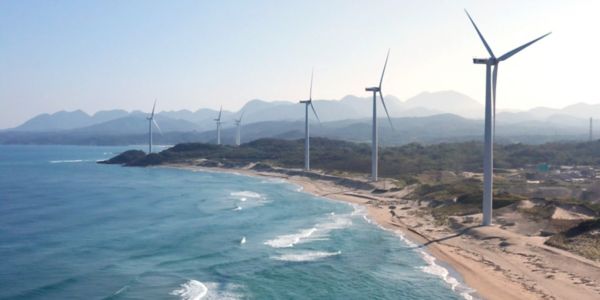It is widely acknowledged in the energy sector and related industries that delivering low carbon capital projects at scale is a challenge for which the solutions are still emerging. Yet the fact is that time is not on our side if we are to meet urgent decarbonisation and climate goals. So, how can progress be expedited?
This topic was the subject of a fascinating discussion at the ADIPEC event at the end of last year – and is something that has continued to be top of the agenda in conversations with clients since.
The scale of the challenge facing us is demonstrated in the recent KPMG report, Turning the tide in scaling renewables. In it, 80 percent of survey respondents agreed that significantly accelerating renewables deployments is the most pressing issue requiring attention to meet the Paris Agreement’s goals – and yet 84 percent reported that current market challenges are causing substantial delays and, in some cases, even the abandonment of renewable energy projects.
There are many hurdles to overcome in a complex ecosystem, but some of the standout issues are:
- Capital criteria are changing – While finance remains available, the dynamics are changing as ESG ratings and sustainability reporting become ever higher in importance. Qualified parties and projects with credible and achievable net zero ambitions need to ensure they have the credentials and proof points required to maximise their access to capital.
- Deployment of capital – The capital available needs to be flowed towards renewable projects in a way that is progressive and measured, but this is not straightforward for owner/operators when the underlying economics are different and there are considerations around energy supply.
- Squeezed EPCs – The EPC (engineering, procurement, and construction) contractors who deliver the projects face significant margin challenges, with increasing pressure on existing commercials and access to raw materials and an appropriately skilled workforce.
There is no single and straightforward solution – but there is no doubt that, collectively, industry will find a way. We see five key areas to focus on:
- Collaboration and partnerships are key. We are facing a new breed of challenges to create a low carbon world, and this means new ways of working are needed. As we move into this phase of rapid transformation, by working with companies, innovators, and investors from outside the legacy stakeholder space, there is an opportunity to translate strategies into executable plans. This includes working with new specialists in the supply chain with a focus on joint ownership and joint returns.
- Technology & innovation can unlock significant gains. Better data flows improve insights into efficiency and performance, helping create marginal gains that cumulatively can have a material effect. Alongside this, continuing R&D as well as investment in innovation and talent remain critical including in technologies such as carbon capture technology or electrification which can lower the carbon impact and improve the economic value equation.
- Operating model change is needed. To pivot away from large, complex hydrocarbon projects towards lower cycle time, lower margin renewables initiatives require a fundamental change in the business model – so whether an owner/operator or an EPC, it is essential to analyse in detail what this means for how the business operates. What in-house capabilities are needed, what partnerships need to be formed, what changes are required in how the organisation is set up to deliver?
- Anticipate and prepare for the future. It’s essential to have a clear line of sight of what’s coming down the track in terms of regulatory rules and requirements, as well as the wider risk landscape. This then feeds into the assurance agenda. Renewables projects have a very different profile to traditional energy projects – and so require different kinds and levels of assurance.
- Stay committed to continuous improvement. Wherever you sit in the ecosystem, you need to be able to objectively examine progress to date and ask yourself where things have gone well, and where not. What lessons can be learned from this, and how can things be done better? Standard continuous improvement practices may also require a re-think to be more dynamic and deliver a quicker route to value.
The path to decarbonisation and net zero is not easy – many of the issues are systemic, and the traditional structures and inter-relationships that have built up over many decades can’t be transformed overnight. In spurring change, government incentives are important and have a big part to play. One only needs to look at the positive effect of the Inflation Reduction Act in the US, with its multi-billion-dollar package of incentives for renewable projects, to see that.
If you’re looking to move faster on the journey, ask yourself these three simple questions:
- Have you taken a fresh look at every aspect of your business to get fit for the new world?
- Are you able to harness real-time data and analytics to enable your business to quickly adapt to changing market conditions?
- Are you open to dialogue with third parties up and down your supply chain to redefine relationships for better outcomes, increased value creation and lower risk?
If you’re facing obstacles with low carbon capital projects, we would be happy to discuss the opportunities available to your organisation to unlock tangible benefits to meet your commercial objectives.





